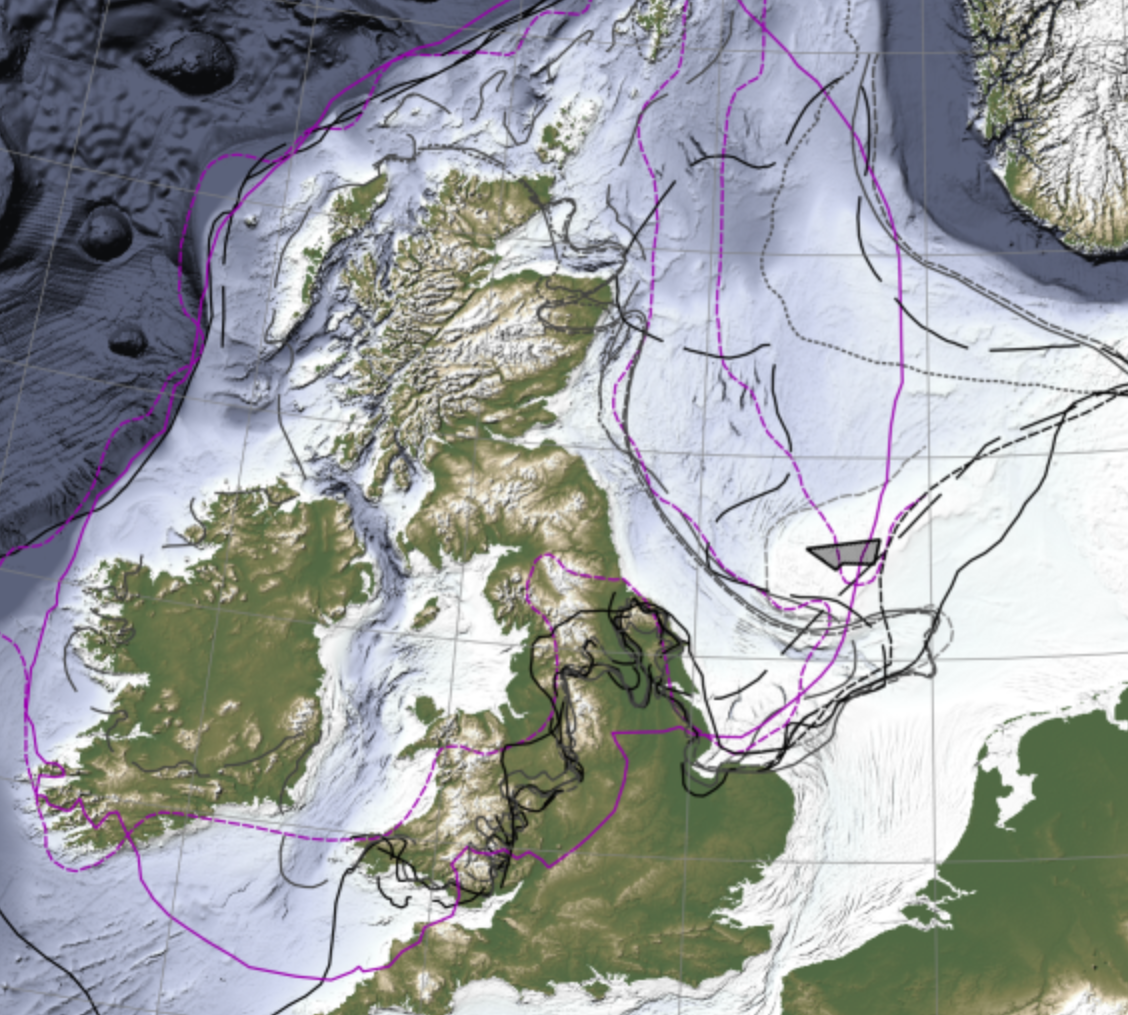One-million-year-old discovery links ice sheets and global climate
Seismic data reveals one-million-year-old glacial landforms beneath the North Sea, reshaping our understanding of Early Pleistocene ice sheets.

Ancient glacial landforms beneath the North Sea, offer fresh insights into ice sheet dynamics during the Early Pleistocene. (CREDIT: GEBCO 2016 dataset)
An international research team has unearthed an exceptional glimpse into Earth’s glacial history. Buried beneath nearly a kilometer of mud in the North Sea lie remarkably preserved glacial landforms, dating back roughly one million years. This discovery provides valuable insight into how ice sheets and global climate have intertwined over millennia.
Using seismic technology, the researchers revealed a landscape etched by a vast ice sheet that once extended from Norway toward the British Isles.
The findings suggest these landforms were formed during a period of global cooling known as the Mid-Pleistocene Transition. During this era, ice sheets grew larger and more dynamic, responding to significant climatic shifts.
Understanding how ice sheets behaved during the Quaternary Period, spanning the last 2.6 million years, is critical for predicting their future responses to climate change.
Ice sheet growth and retreat have historically influenced Earth’s climate by altering atmospheric patterns and introducing freshwater into oceans. However, gaps remain in understanding how ice sheets behaved during the Early Pleistocene, particularly before the Mid-Pleistocene Transition.
This study challenges longstanding assumptions about the extent of ice sheets during this early epoch. Historically, models suggested that ice sheets in northwest Europe were limited until around one million years ago. However, alternative theories propose that significant ice advances occurred as early as 1.9 million years ago.
The new seismic data supports a revised understanding, revealing that a massive ice sheet advanced across the central North Sea during the Early Pleistocene.
Dr. Christine Batchelor, a Senior Lecturer at Newcastle University, played a pivotal role in interpreting the landforms. “To fully understand the linkages between ice sheets and climate, we need to study how past ice sheets responded to long-term changes in climate,” she explained. “Our results suggest that ice sheets in northwest Europe expanded significantly about one million years ago in response to cooling.”
Related Stories
The research utilized high-resolution 3D seismic technology, initially developed to assess seabed suitability for oil, gas, and renewable energy infrastructure. This technology allowed scientists to examine the buried landscape in unprecedented detail.
The team identified streamlined ridges carved by ice movement and features marking the ice sheet’s retreat. These landforms bear a striking resemblance to those formed by more recent glacial activity, offering a direct comparison to modern processes.
The retreat patterns of this ancient ice sheet are particularly illuminating. The subdued nature of the landforms indicates rapid retreat, likely caused by the ice sheet lifting off and floating as its frontal margin melted. This phenomenon provides new insight into the mechanisms driving ice sheet collapse.
Dr. Dag Ottesen from the Geological Survey of Norway, the study’s lead author, highlighted the significance of these findings. “This study was made possible by the availability of 3D seismic data from the North Sea, which allowed us to examine the buried landforms in striking detail,” he said.
Interestingly, the researchers also uncovered evidence of powerful ocean currents that shaped the seabed before the ice sheet’s advance. These elongated furrows, incised into the seabed, predate the glacial landforms and suggest a dynamic marine environment characterized by strong currents. This discovery revises earlier interpretations, which attributed these features to glacial activity.
“With our high-resolution data, we can see that the shape and size of the furrows is consistent with an origin as ocean current furrows,” said Dr. Ottesen. “This differs from previous interpretations, re-writing our understanding of North Sea glacial history.”
The findings also provide new perspectives on how the North Sea evolved over time. Prior to one million years ago, the region was predominantly shaped by ocean currents. Afterward, glacial influences became more dominant, marking a significant shift in the area’s geological history.
Despite these advances, the study acknowledges some limitations. Precise dating of the landforms remains elusive, highlighting the need for additional research. “A wealth of seismic data is now available for the North Sea,” noted Dr. Batchelor. “The next step is to acquire long sediment cores to better understand the timing of glacial events.”
By leveraging cutting-edge technology, their work not only illuminates the North Sea’s past but also offers tools for predicting how today’s ice sheets may respond to ongoing climate change.
Note: Materials provided above by The Brighter Side of News. Content may be edited for style and length.
Like these kind of feel good stories? Get The Brighter Side of News' newsletter.
Rebecca Shavit
Science & Technology Journalist | Innovation Storyteller
Based in Los Angeles, Rebecca Shavit is a dedicated science and technology journalist who writes for The Brighter Side of News, an online publication committed to highlighting positive and transformative stories from around the world. With a passion for uncovering groundbreaking discoveries and innovations, she brings to light the scientific advancements shaping a better future. Her reporting spans a wide range of topics, from cutting-edge medical breakthroughs and artificial intelligence to green technology and space exploration. With a keen ability to translate complex concepts into engaging and accessible stories, she makes science and innovation relatable to a broad audience.



